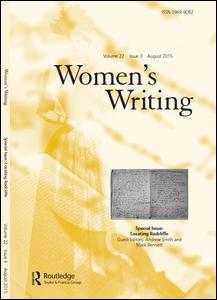
Women's Writing
Volume 3, Issue 2, Jan 1996
Pages 97-111
- DOI: 10.1080/0969908960030202
- Print ISSN: 0969-9082
- Online ISSN: 1747-5848
George Eliot, Straight Drag and the Masculine Investments of Feminism
ABSTRACT
“Equality politics” has become something of a high stakes inquiry in recent feminist work on phallocentrism and knowledge critique. Because of George Eliot's unwillingness to countenance the egalitarian feminist politics of her own day, the masculinism that characterized her personal and professional life is, indeed, puzzling. But I argue that Eliot's uneasy position suggests a more nuanced understanding of the binary that underwrites gender hierarchy, an understanding which gives as much weight to the meaning as to the shape of gender. Judith Butler's theory of gender performativity provides a counterweight to my discussion of Eliot's “straight drag,” a pattern of social self‐positioning that demands a sharp aesthetic sensibility for the formal unity of gender (that is, the commerce between form and idea, between what “manliness” looks like and what masculinity means historically and politically). While Eliot's essays and letters espouse a feminist, position that is open to the charge of misogyny in its commitment to individualism and its circumvention of feminist collectivity, Eliot's work also registers the possibility that the misogynist traces in such lone‐star tactics are not only unavoidable but necessary to feminism, that the willingness to risk the possibility of such byproducts becomes the measure of feminism's readiness for further strategic investment in the institutions and knowledges that have worked to subordinate women both as individuals and as a group.